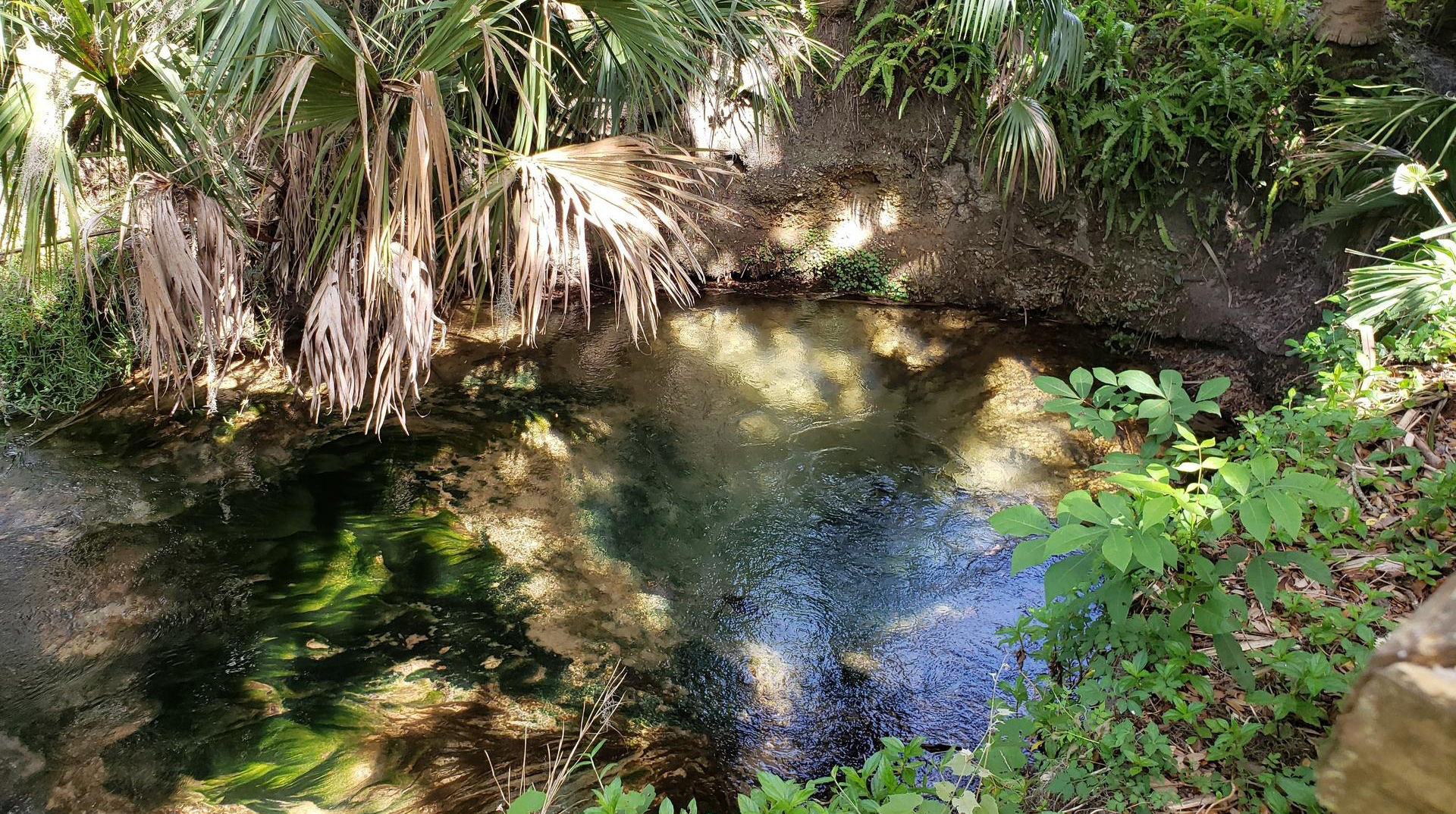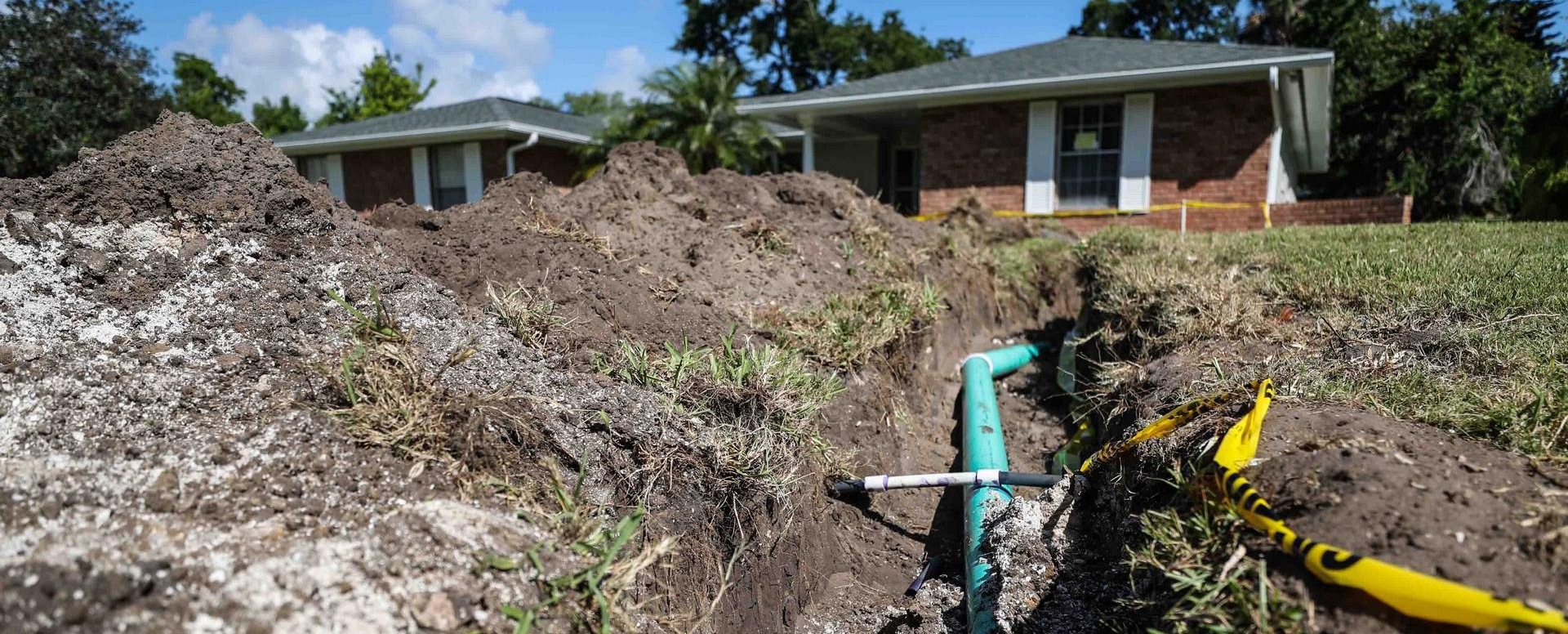
'Time to deal with it'
IN THE SERIES: SEPTIC CRISIS | SAVING THE SPRINGS | DELTONA TANKS | COASTAL CONTAMINATION | COMPLEX AND COSTLY
When Mike Waltz and his team knocked on more than 20,000 doors last summer during his successful campaign for election to U.S Congress, one message came through "loud and clear" as they talked to voters.
People everywhere want something done about water quality, septic tanks and algae blooms, said Waltz, a Republican who represents the Northeast Florida district that includes Volusia and Flagler counties. And it’s not just Democrats or Republicans.
"We have a (federal legislative) delegation of 27," he said, "and water quality in general is a bi-partisan issue."
Pervasive toxic blooms of red, brown and blue-green algae have united Florida like no other issue.
A host of water quality issues contribute to the high nitrogen levels fueling the algae blooms. Aging and leaking wastewater lines. Discharge of treated wastewater into waterways. Stormwater runoff. Rampant use of fertilizers. Disposal of biosolids from treated wastewater.
And, the 2.7 million septic tanks statewide, especially aging septic tanks in improper locations that allow untreated wastewater to flow into groundwater and nearby waterways.
Once in the waterways, the nitrogen from all of these sources feeds the algae blooms that proliferate in the state's waterways, turning away tourists and killing fish and other marine life.
Officials may be facing a clear mandate to do something. But they're also looking at costs in the billions of dollars to clean up Florida’s waterways over the next 20 years. So far, the state of Florida has only earmarked millions of dollars to address the issue.
Septic tanks remain one of the biggest dilemmas. Volusia County alone has an estimated 100,339 septic tanks. Several waterways in the county, including Blue Spring, DeLeon Spring, Gemini Springs and the Halifax River, exceed the target limits for either nitrogen or the chlorophyll that is produced by algae that thrives on nitrogen. At Blue Spring and Gemini Springs, a big portion of the nitrogen originates from aging septic tanks close to the waterways.
Large-scale, multi-million dollar projects to upgrade local government wastewater treatment plants and add additional treatment to stormwater will help remove some of the nitrogen. But utility officials say they won't be able to reach state water quality targets without converting thousands of septic tanks to either city sewers or more modern, higher-performing septic tanks.
Waltz hears about the need to replace or upgrade septic tanks — and the expense of doing so — across his district, from communities with springs in West Volusia to the Halifax River and Mosquito Lagoon. "We were just in DeBary and Deltona,” he said, “and it's a huge issue with a huge price tag attached to it.”
"If you look at folks who are looking to solve problems, this is certainly one of them we need to take on," said Waltz. Among Florida's federal delegation, “There's no disagreement that we have to take it on."
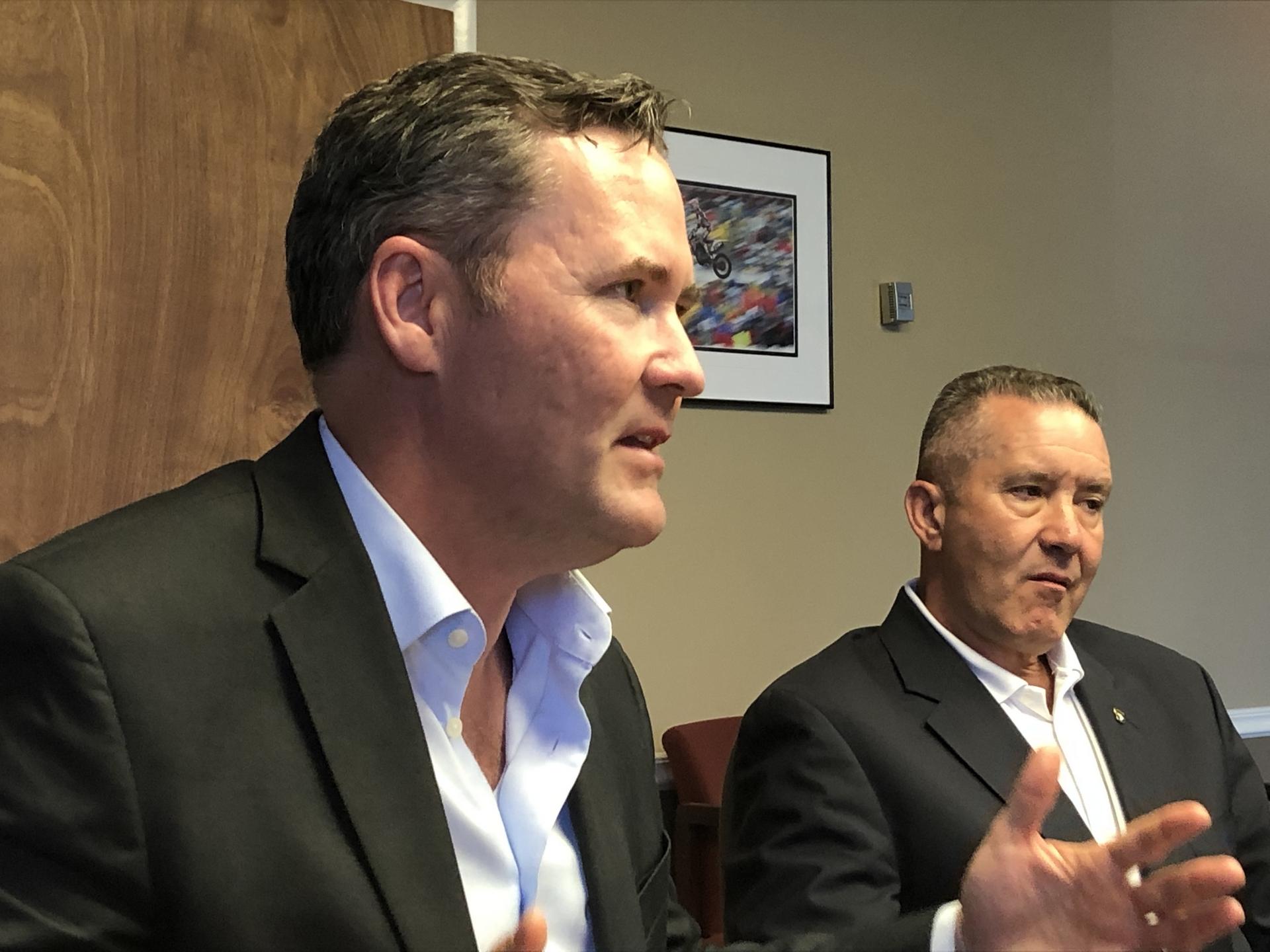
"Time to deal with it"
Upgrading existing septic tanks to nitrogen-removing septic systems cost as much as twice more than old-style septic tanks. Iin some cases the newer septic tanks require annual inspections and maintenance that costs from $200 to $300 a year. The alternative — hooking up to municipal sewer — is also costly and leaves homeowners with a monthly wastewater payment to the local utility.
Estimates range from $15,000 to $20,000 a home for a utility to lay municipal sewer lines and then repave the roads, or about $2 million for every 100 homes. Then there's a $5,000 or $6,000 cost per home to hook the home up to sewer. Converting just 10 percent of Florida’s septic tanks could cost an estimated $5 billion.
Paying for it all will take a united effort that "everyone shares in," said State Sen. David Simmons, R-Altamonte Springs. "It can’t just be charging homeowners and telling the residents in certain areas they’ll just have to pay on their own."
The costs aren't unexpected to those who have been watching the situation unfold over decades, said Clay Henderson, director of Stetson University's Institute for Water and Environmental Resilience and a former Volusia County Councilman.
“The tanks were a cheap way to develop without regard to the long-term costs," Henderson said. “That’s the same way we always deal with water as an abundant resource: 'We’ll deal with the problems down the road,” he said. "Now we’re down the road and it’s time to deal with it.”
But figuring out which aspects to take on and how has proven elusive for state legislators.
Rep. Tom Leek said too frequently "we get lost in the discussion about what is or what isn't the primary cause of the problem and we fail to act."
"If we know what the parts of the problem are, let's begin the process of advancing the solution, even incrementally," said Leek, R-Ormond Beach.
The proposed budget expected to be forwarded to Gov. Ron DeSantis this week sets aside $50 million for springs restoration funding, and reallocated $50 million budgeted last year but not spent.
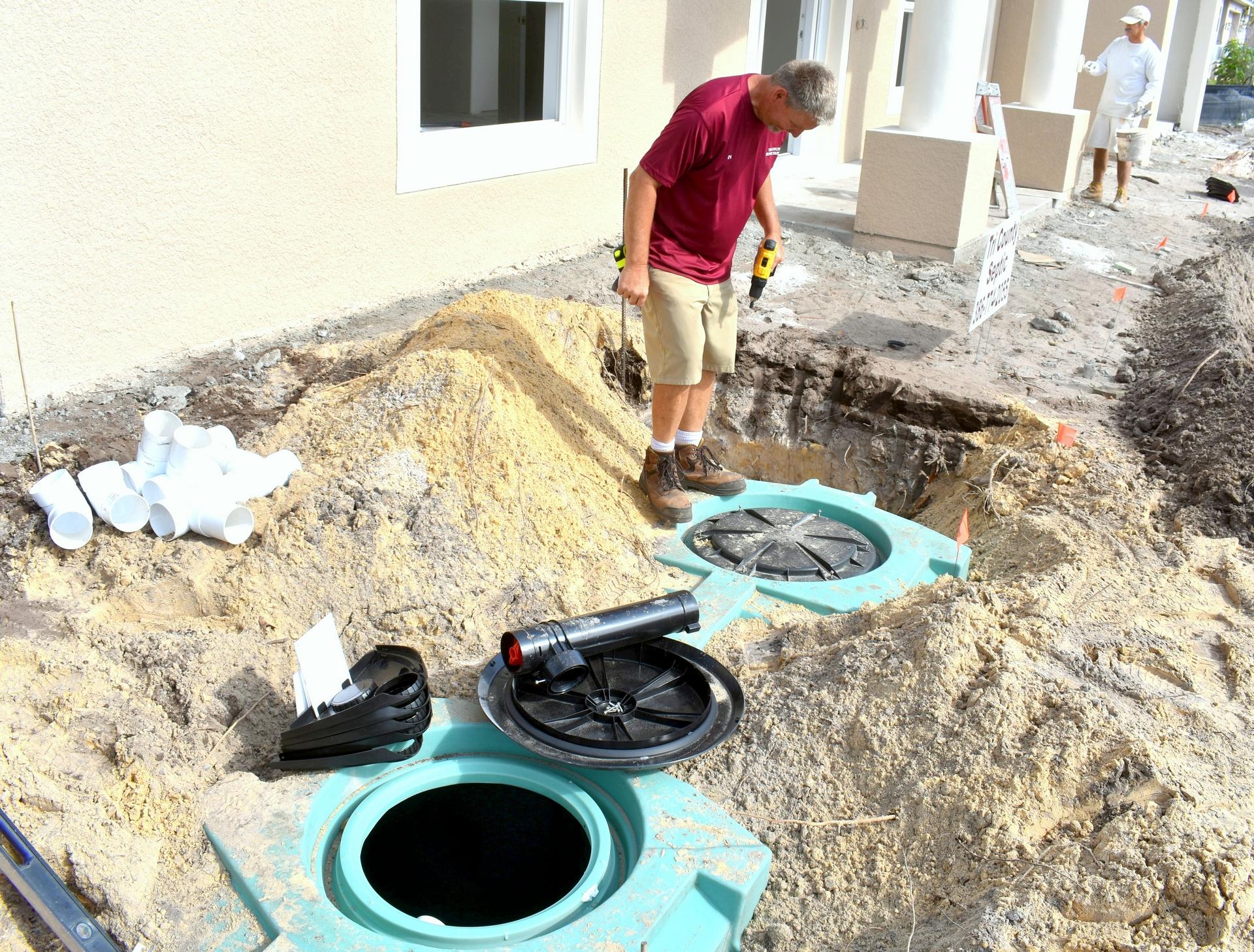
Legislators also approved funding for about $49 million in other water projects. Of those, at least eight were septic-to-sewer conversion projects totaling $3.9 million. One of those is a long-awaited $250,000 contribution to the design for a septic conversion project on Mosquito Lagoon in Oak Hill. The line item has been in the budget before, but was vetoed by Gov. Rick Scott. This time, Oak Hill Mayor Doug Gibson and Volusia County Councilwoman Deb Denys have their fingers crossed the appropriation squeaks past the veto pen of DeSantis.
Another project on the list is $400,000 for septic to sewer conversions in South Daytona, where grants have helped some residents hook up to city sewer at no cost, and $350,000 for a septic conversion project along West 5th Street in St. Augustine.
State officials say they're working on additional grant programs to help pay for septic conversions and upgrades, but an initial incentive program launched by the Florida Department of Environmental Protection this year hasn't proven very popular. The wording in the program, which offers to pay “up to $10,000” toward the cost of converting septic tanks to newer advanced treatment tanks in priority focus areas around springs, made septic contractors and their customers nervous. Department officials said they are working to clarify and publicize the incentive program.
The department also has an initiative to try to provide money in coastal areas where many tanks sit in remnant dunes with their drain fields flowing directly into coastal waters like the Indian River or Mosquito Lagoons, said Tom Frick, director of environmental assessment and restoration. The goal, said Frick, is to keep moving forward with plans to convert tanks in vulnerable areas where existing tanks are densely clustered.
The St. Johns River Water Management District has helped pay for some of the septic-to-sewer conversions. Among dozens of water quality improvement projects the district has helped pay for over the past three years, 11 were for septic-to-sewer conversions, including projects in South Daytona and Ocala.
The district evaluates the projects and awards grants to projects that are “high quality and very cost effective,” said Casey Fitzgerald, the district’s springs protection initiative director. He pointed Volusia County Utilities laying the groundwork year by year to begin bringing in areas on septic systems and converting the homes to sewer.
“Typically you’re going to be looking at those (projects) within the priority focus areas of the Outstanding Florida Springs and the areas where tanks are most densely clustered together,” Fitzgerald said.
So far, the district hasn’t had a rush of applications for money for septic to sewer conversions, “but as it becomes more and more evident that this is a major contributing factor, we expect to see a lot more,” he said. However, as grants become more competitive, utilities officials expect the rules to be tightened. For example, local governments may be required to have 75 percent of residents in a neighborhood pre-committed to hook up for sewer when it become available in their neighhorhood rather than 50 percent.
For projects in spring basins, both the district and DEP contribute money. Fitzgerald said the district typically pays 25 percent, the department 25 percent, and local government 50 percent.
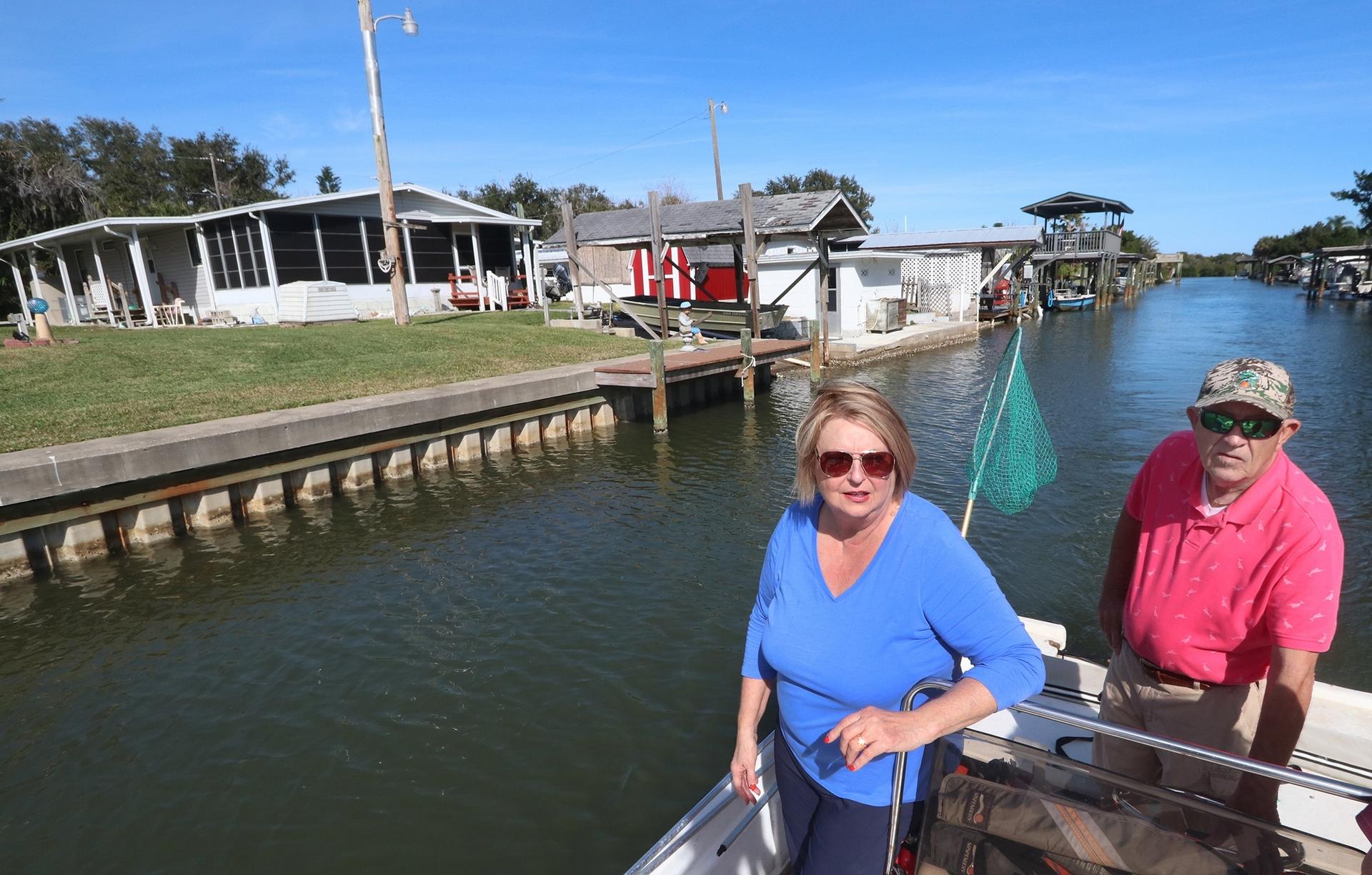
New rules considered
The state’s funding comes from the $50 million a year in springs funding designated by the 2016 Florida Springs and Aquifer Protection Act, the same rule that required basin management action plans for 13 outstanding Florida springs.
While the agencies have been able to piece together some cost-assistance programs, new regulations aimed at septic tank maintenance and conversion have not passed.
Efforts to write new regulations for septic tanks collapsed during Florida’s 2019 legislative session, but it’s expected to come up again when committees begin meeting this fall.
Simmons hopes the state can interject more forceful language into the requirements for basin management action plans for springs and other waterways. The state should be farther along in meeting the pollution criteria set for the state’s waterways, lowering nitrogen levels to 3 milligrams per liter of water or less, Simmons said.
The plans “just simply didn’t have the kind of details that they should,” he said. He pointed, for example, to many projects listed for the springs in Volusia County by the department and local governments. Too many of them, he said, are labeled “to be determined” when it comes to timing or funding.
Bills sponsored in the House and Senate last session would have required inspections every five years and shifted oversight of septic tanks from the Department of Health to the Department of Environmental Protection, but the bills attracted a lot of lobbying and debate.
“We got very close to getting it passed,” said Simmons. “But there were those that believed we needed to get out the pencil sharpener, and sharpen our pencils and work on it some more.”
The bill was similar to a bill successfully passed in 2010 by Lee Constantine, a former state senator and now Seminole County Commissioner. His bill would have required septic tank inspections every five years, but that measure drew widespread opposition statewide and was eventually gutted without ever taking effect.
Anthony Pesare, owner of Tri-County Septic Service in Orange City, thought requiring inspections or maintenance was a good step. He had hoped similar legislation proposed this year might pass.
State Rep. David Santiago, R-Deltona, also favors the concept of septic inspections, but isn't sure at what point those should happen, whether it should be on a certain time frame or when a home is sold.
Earlier this year, Constantine co-authored a sweeping set of proposed water policies for the state with former Gov. Bob Graham for the Florida Conservation Coalition. Among other things it called for prohibiting septic tanks on properties less than five acres or required advanced nitrogen-removing septic tanks, aggressive reduction of pollution sources, and restoration of water management district budgets slashed during Gov. Rick Scott's administration. The groups in the coalition are among many across Florida demanding action.
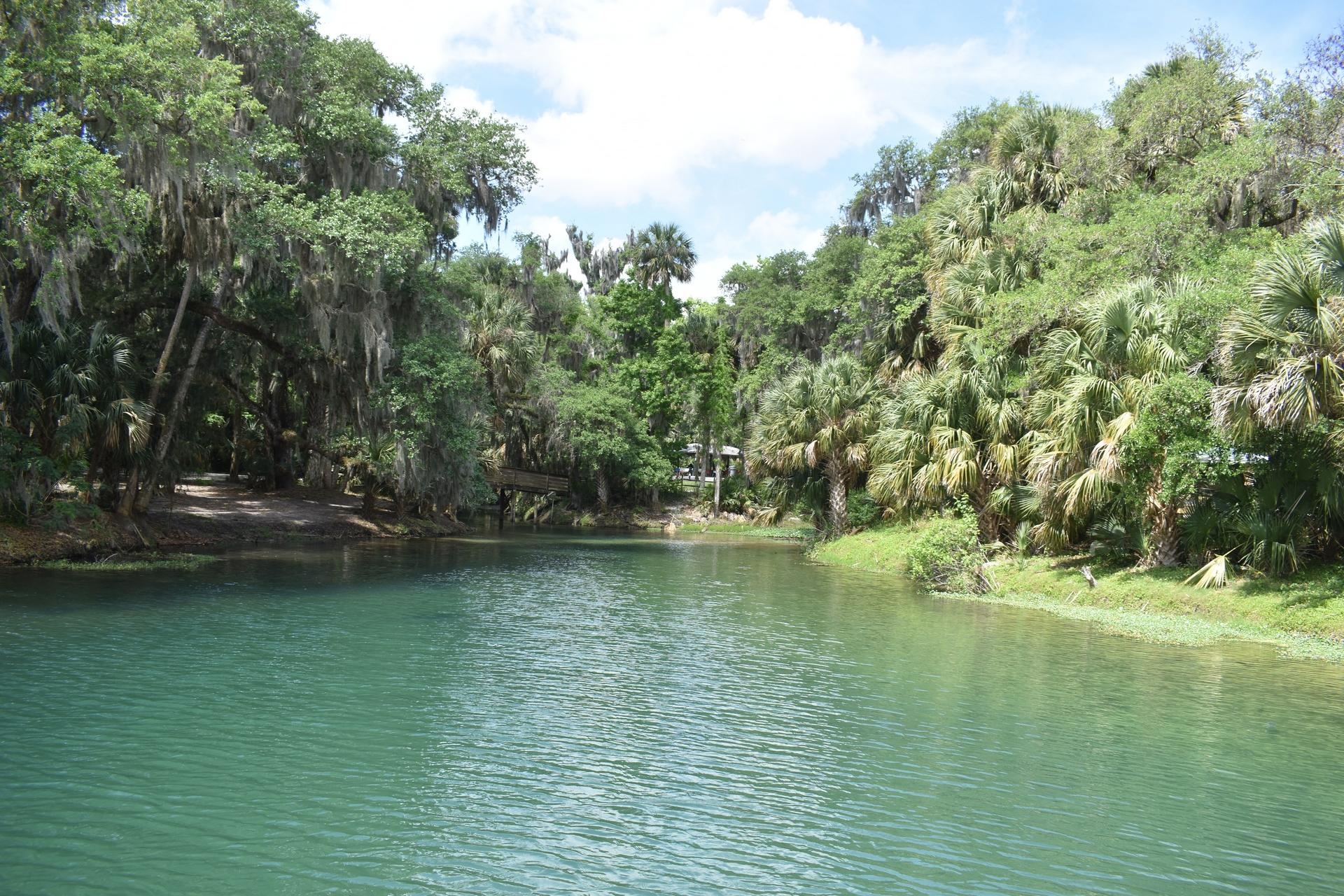
A dedicated funding source
The Coalition wants legislators to create "a dedicated funding source for water solutions," said Constantine. "But what we first want to do is get a group the legislature will trust to go out and actually look at everything that needs to be done to ensure our water resources are protected, not polluted and that we have quality and quantity, and at how much that will cost over the next 20 years.
"The estimates are from $1 to $2 billion a year," he said. "It's not like we're asking for the moon and stars. We have a $91 billion state budget."
The state needs to commit significantly more money to cleaning up the state's waterways, he said, making use of money that was supposed to be set aside by the Water and Land Conservation initiative approved by voters in 2014.
Legislators will be back in September with an effort to give the department and local governments the details needed to address septic pollution, said Simmons, who has been frustrated with the state's progress on the plans to clean up the springs.
It's high time for Florida to quit dragging its feet on meeting water quality standards, he said. “Water quality standards have been in place for decades and yet most waterways still don’t meet those standards."
Simmons is convinced the septic industry will come forward with successful ways for reducing the cost of the newer septic tanks and drain fields, if only the state would truly make cleaning up the waterways a priority.
“Once we go ahead and state these things have to be done, it’s absolutely amazing how the marketplace comes forward with something that works,” Simmons said.
The senator and others caution they're not targeting all septic tanks.
“There’s no need to go get the ones that aren’t causing the problem,” Simmons said. “What we’re talking about are getting the ones that are the worst because of their proximity to the water table, the springs or whatever."
Both Simmons and Santiago said they want to come up with a way to help pay for more projects.
"If we want to get serious about the environment, especially as it's related to sewer and septic, let's get serious about making a funding source available to our cities and counties so they can offset the costs drastically," said Santiago. "We have the money."
Santiago, who is termed out after next year, said he would "not support an unfunded mandate from Tallahassee forcing people to do this."
While Waltz said funding is primarily a state and local issue, he and other members of Congress are looking at how the federal government could help. He said they’re exploring options such as a water infrastructure innovation program or the clean water revolving fund, and financing options available to state and local governments to help pay for the cost of major infrastructure projects like major sewer line expansions.
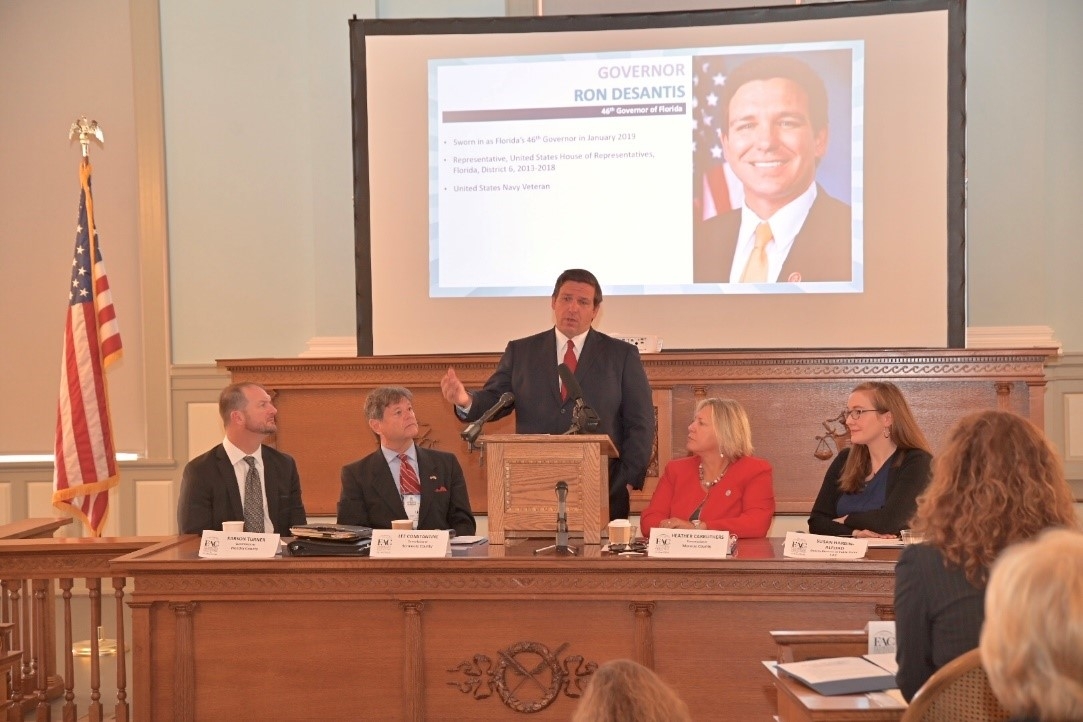
Smaller cities scramble to compete
Local government officials, meanwhile, are scrambling to piece together various grants to raise the money for septic-to-sewer conversions, and are exploring other means to share the costs of septic conversions, such as special assessment districts or low-cost state or federal loans.
In the case of Oak Hill, Gibson and Denys have been able to put together grants from the Indian River Lagoon Council, with a county appropriation and the hoped-for line item in the state budget for the planned septic conversion there.
Gibson would like to see a simpler way, especially for small cities, to partner with agencies to raise the money for projects like the city's planned septic-to-sewer conversion.
"I think the state should set up some kind of funding system to do retrofit septic to sewer," Gibson said. It's tough to compete against huge projects like the Everglades restoration or much larger cities, he said.
He's one of many local government officials who had pinned their hopes for water quality improvements on the half-cent sales tax proposal that Volusia voters rejected in May.
The priority list of projects included about $400 million in water quality improvement projects, including at least $12 million for converting neighborhoods from septic tanks to city sewer.
For a small city like Oak Hill, Gibson said the dependable flow of money every year would have been very helpful to their efforts to help clean up Mosquito Lagoon. The picturesque waterway is becoming a bigger tourist draw, and he believes that would only increase if they could stave off future algae blooms.
Constantine said the state's economy is closely linked to water quality and quantity.
Florida’s economy is based on growth, “but nobody in Illinois, Iowa or Pennsylvania ever came to Florida because we have the best strip malls," he said. “Even if they don’t live on a river or a beach or a spring, they know they can get there."
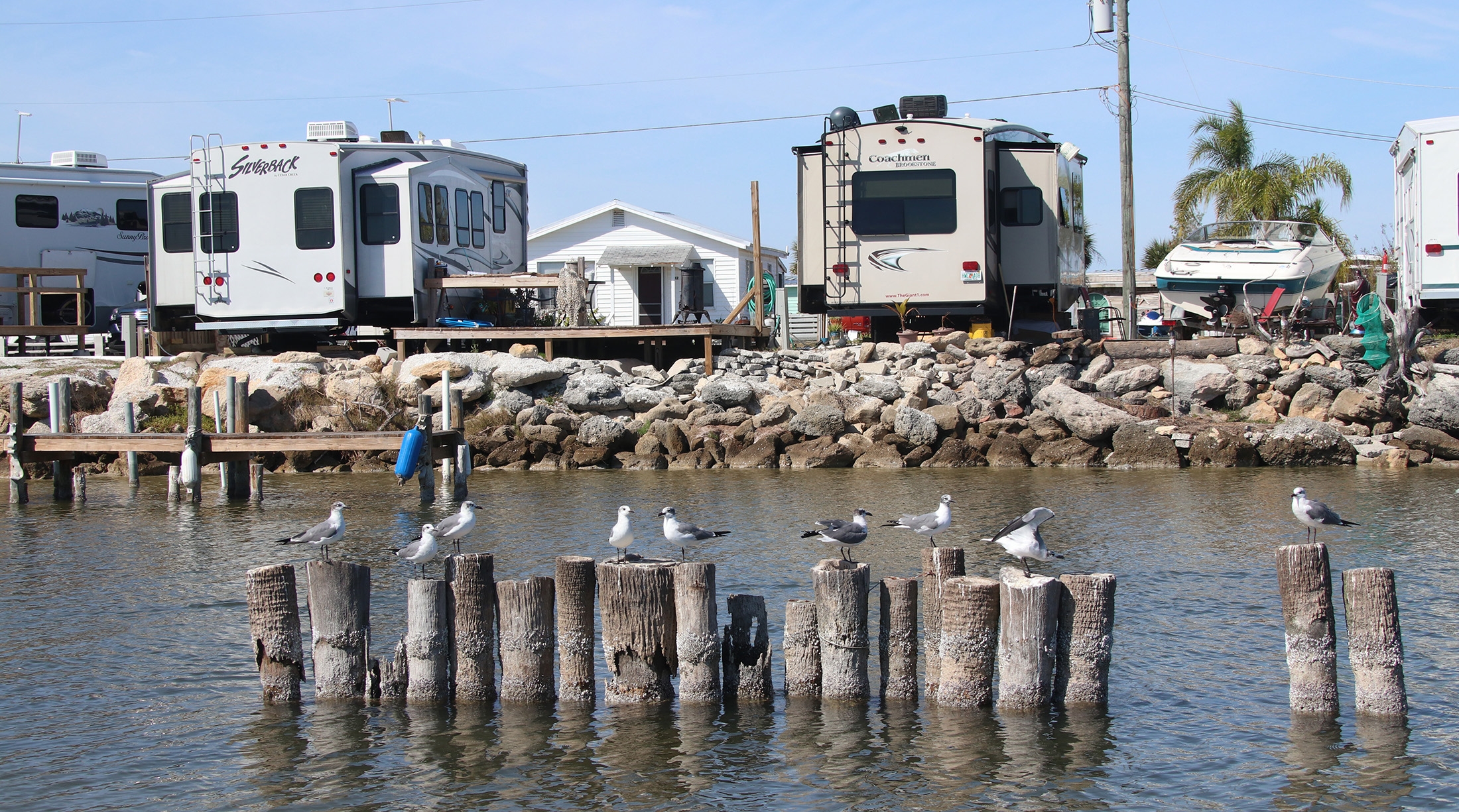
What happens after "the honey wagon" arrives
Many septic tank owners have been there. Toilet gurgling? Shower draining slow?
Time to call a local septic service, known in the business as "the honey wagon."
The lid is pried off the septic tank and a few minutes and a couple of hundred dollars later, plumbing efficiency is restored. After the task is finished, the truck departs and few have any idea where their wastewater winds up.
As pressure mounts to clean up Florida's waterways and prevent the flood of nitrogen human waste is carrying to the state's underground water supplies, the sludge trucks and spray fields have come under increasing scrutiny.
In Volusia and Flagler counties, Ronnie Mills and Greg Thompson are the main men people call to remove waste from septic tanks. Both are second-generation septic contractors, and operate two of the three state-permitted sites for disposing of or treating septic tank contents in the two counties. Each owns facilities and spray fields where the contents of septic tanks are treated, prepared or sprayed onto fields.
State officials are supervising the operations of the septic pumping services more closely than ever before, said Mills, owner of Joe Mills Septic Tank Service in DeLand. As a result, he said, the companies' costs are rising, and so is the cost of having a septic tank pumped.
When the tanker truck arrives at Mills' treatment facility, the sludge is screened, then pumped into a tank where it's treated with lime to kill pathogens. Then it can be spread over a field. Hay is grown on the spread site to help remove nitrogen from the soil. The hay may be fed to cattle or used for road stabilization.
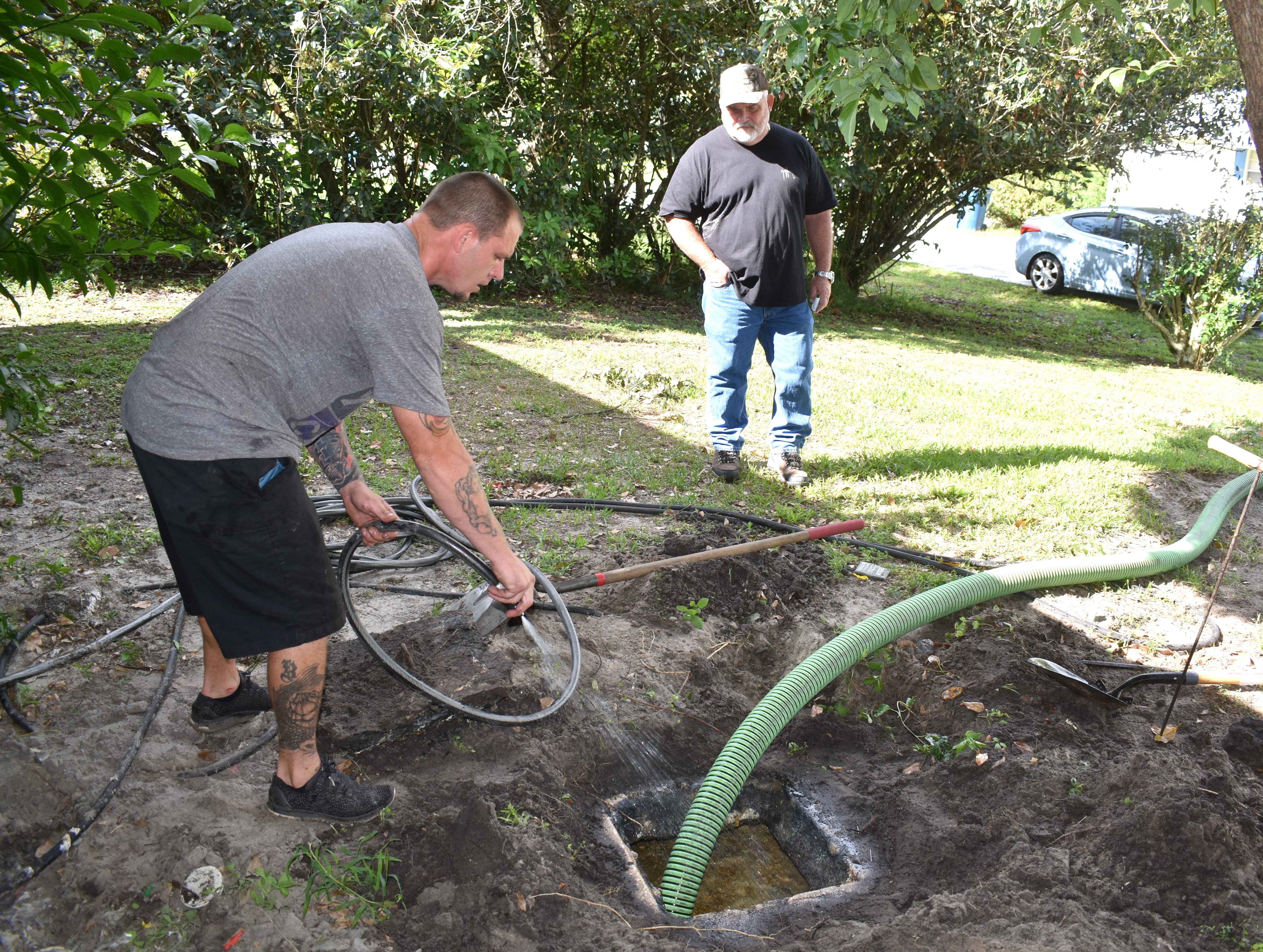
"I've been doing land spreading since back in the day when if a property owner said it was OK to dump on his site, you could back up and dump, no treatment whatsoever," Mills said. Since the permitting for his operation was moved under the state Department of Environmental Protection, Mills said his paperwork has tripled or quadrupled.
Wastewater pumped from septic tanks is governed by state regulations that require treatment, management, monitoring, reporting and disposal, said Dee Ann Miller, a DEP spokeswoman. The regulations are designed to prevent or minimize the potential impact of nutrients, heavy metals and disease-causing organisms to waterways or groundwater.
The permits require a nutrient management plan prepared by a professional engineer or certified nutrient management planner, which establishes the rate for all biosolids, soils and other nutrient sources to be applied to the ground. State officials said that's to minimize the amount of nutrients discharged to waters of the state.
Thompson runs the Rainbow Ranch, off U.S. 1 in Flagler County, where tank trucks for his septic businesses — Woody's Septic Tank Services, Deltona Septic Service and Ormond Septic — de-water the wastewater before taking it to a landfill, according to the department. Thompson thinks the facility earned its name because of the rainbow that formed in the water when the contents of the truck were sprayed. According to the DEP, Thompson's company takes the biosolids to a lined landfill for disposal.
The other company handling septic waste in Volusia County is American Bioclean, Inc., located off State Road 415 in Samsula.
To Mills, once the septic waste has been treated with lime to stabilize it, it's no different than the fertilizer people buy for their yards. But environmental advocates have grown increasingly concerned about the nitrogen released from the land application of biosolids, especially in areas where large amounts of sludge from municipal wastewater treatment facilities are spread.
Mills expects the state to eliminate land spraying eventually, as the septic tank and wastewater treatment industries come up with alternatives.
Here are some questions, and answers, related to septic tank sludge:
Q. How much biosolids are applied annually to land sites across Florida a year? The state does not track biosolids pumped from septic tanks separately from biosolids from municipal wastewater treatment plants. In total, the state reported 320,000 dry tons of biosolids in 2017 from septic tanks and municipal wastewater systems.
Q. Where can biosolids be disposed? Under state law treated material from septic tanks can be disposed of in one of three ways, according to the DEP:
• At a permitted wastewater treatment facility, where the hauler pays the facility to treat and dispose of sludge along with wastewater and biosolids from the facility.
• At a regulated septic management facility, where treated sewage is applied at a set rate designed to manage the nutrients. The site must be a state-specified distance from lakes, rivers or streams, ells, grazing land and public access points.
• At a dewatering facility where solids and liquids are separated, with the liquid then delivered to a wastewater treatment facility and the solids disposed of at a permitted landfill.
Q. What are the requirements?
• Treatment to reduce or eliminate disease-causing organisms pathogens.
• Regular sampling, with test results submitted to DEP.
• Total haul records of biosolids sent to land application sites, submitted in a monthly report to DEP.
• Tracking of all biosolids spread at a land application site.
• Annual summary report of nutrients applied to land application sites.
Q. What are the requirements for land application? A setback of at least 200 feet to streams or other waterways or conduits to groundwater, and a minimum distance to groundwater.
Q. What kind of testing is done? The wastewater collected from the septic tanks is tested in holding tanks at treatment facilities and soils at the land spreading sites also are tested quarterly, for nitrogen, phosphorus and metals. If testing shows the soil has reached a certain level —for metals, for example — Mills said his company can no longer spread on that site.
Q. Could the sludge be hauled to local wastewater treatment plants instead? Not at this time. Although Volusia County officials have discussed the possibility of accepting sludge at a wastewater treatment facility, officials said it would require separate and costly handling. The material couldn't be added straight to wastewater treatment systems because it would disrupt the balance of good bacteria the facilities use to break down wastewater that comes in from municipal sewers.
About This Series
DAY ONE: Hundreds of thousands of septic tanks leak nitrogen into Florida's water supplies, helping fuel algae blooms.
DAY TWO: Restoring water quality in the area's springs will require removing or upgrading thousands of septic systems.
DAY THREE: Deltona has more than 23,000 septic tanks. "No forced sewers" campaign is colliding with Blue Spring restoration.
DAY FOUR: Cities on the east side of Volusia grapple with septic tanks along Mosquito Lagoon and the Halifax and Indian rivers and the damage they may be causing.
DAY FIVE: Paying to convert septic tanks to sewer is no easy — or cheap — task.
